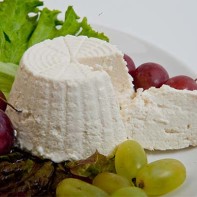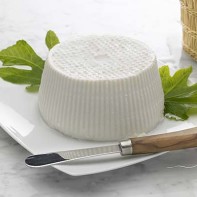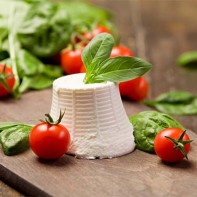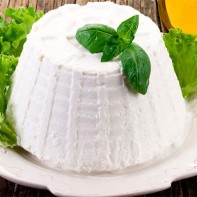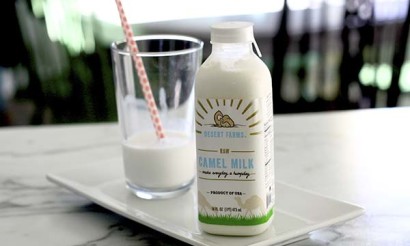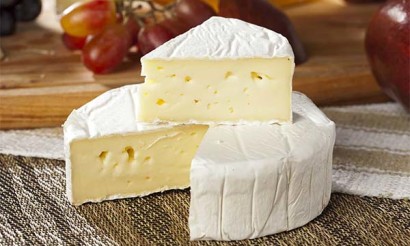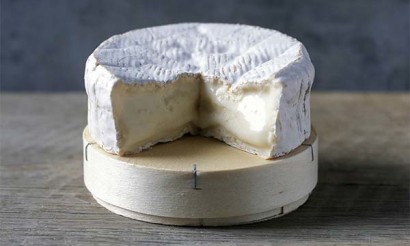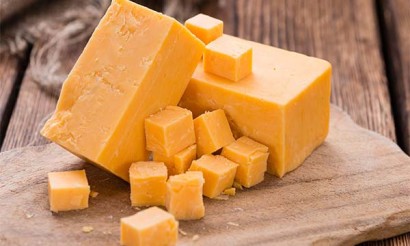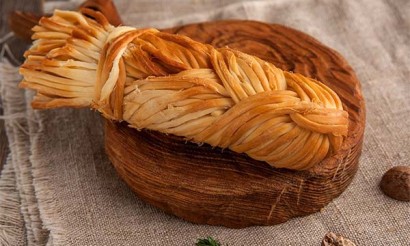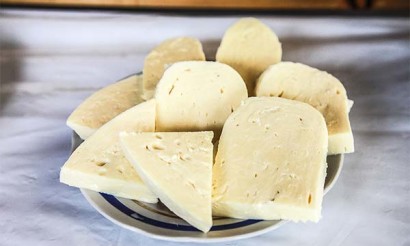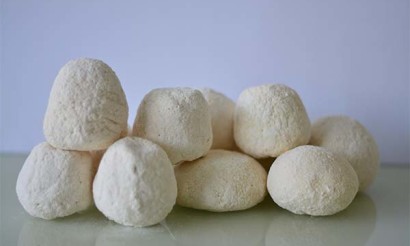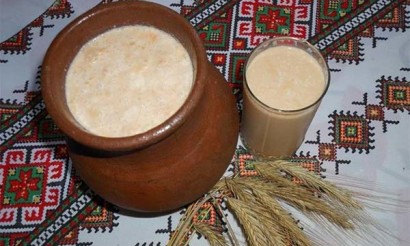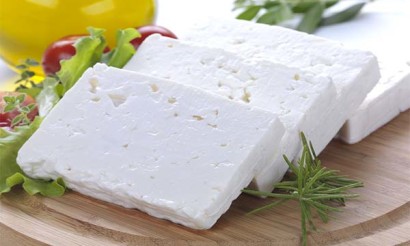Ricotta: what kind of cheese is it, useful properties and contraindications
Ricotta is an Italian cheese with a delicate taste. This product is used in many dishes on its own, as well as a substitute for "heavy" varieties and dairy products to make the taste more refined. This article contains all the useful information about this cheese, as well as tips on how to eat it.
- Ricotta: what kind of cheese it is, what it's made of, and what it tastes like
- History of Origin
- What are they made of
- Types of
- What it tastes like?
- The difference between ricotta and mascarpone
- Composition and Calories
- What is ricotta cheese good for?
- For Women
- For Men
- For Old People
- For kids
- Can I eat ricotta cheese when I...
- For weight loss
- Gastritis
- For diabetes
- Harm and contraindications.
- How to choose and store
- Where to buy and how much costs
- Cooking
- Can I bake it?
- How and with what to eat ricotta
- Wine to match the cheese
- How to Make Ricotta at Home
- What to cook with ricotta cheese
- What to replace ricotta in recipes
- Cheese
- Sour Cream
- Mascarpone
- Cream cheese
Ricotta: what kind of cheese is it, what is it made of, and what does it taste like?
First of all, it is worth learning about the history of the emergence of cheese, varieties, as well as taste features, in order to use it competently in the preparation of various dishes.
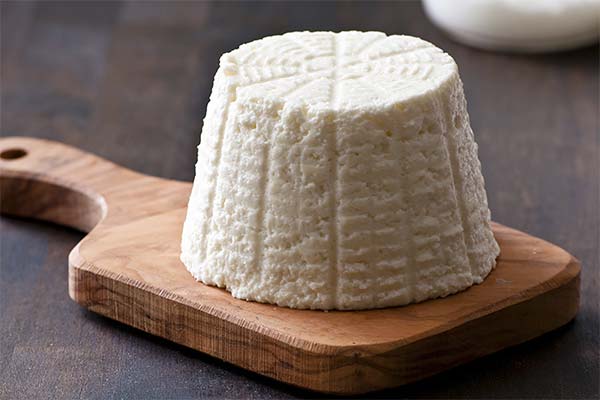
History of origin
The most popular version of the origin of ricotta says that the cheese was invented on the territory of the Roman Empire in the II-III centuries BC. It was also mentioned during the Middle Ages: the Sicilian King Frederick II, passing by a dairy farm, tasted ricotta, which the owner of the farm treated him to. The monarch was pleased with the taste of the product.
However, the very first mention of ricotta preparation is found in the work of Arab explorer Ibn Butlat of Baghdad. Having visited one of the sacred cities of Islam, Kairouan, in the XI century, he described in his book a recipe for the delicate cheese. The theory of the Arab origin of ricotta also includes terms with Arabic roots that describe the cheese-making process in Italy:
- The foam that appears when heated (it is protein) is called zabbina.
- Ricotta aged for a long period is zammataru.
What is it made of
The word ricotta, translated from Italian, literally means "recooked. It is called ricotta because it is made from the whey left over from other types of cheese. Ricotta is made from the milk of goats, sheep, cows, and there are also varieties made from buffalo milk. Produced in Russia, it usually contains cream. Such cheese takes on a particularly delicate, cream-like texture.
Types
There are several types of ricotta, which differ from each other both in the way of preparation and in their purpose:
- Fresca (ricotta fresca). Fresh, it does not keep long - only 5 days.
- Romana (ricotta romana). Cheese aged for a long time, becomes hard and slightly salty.
- Forte (ricotta forte). Strong cheese, which has a spicy and bitter flavor. It is made with yeast, which gives it such a distinctive flavor notes. Usually stored in glass, it is consumed pure with bread. Interestingly, it is this type of ricotta that has been officially recognized as a food that is traditionally consumed in Lucania and Puglia (regions of Italy).
- Affumicata (ricotta affumicata). It undergoes temperature treatment in smokehouses, which results in a characteristic crust on the surface of the cheese and a smoky flavor.
- Ricotta al forno (ricotta al forno). Made in an oven, it has a caramel flavor, which is slightly reminiscent of toffee.
What it tastes like.
Classic ricotta without added salt has a delicate curd flavor that tastes slightly sweet. The percentage of lactose present in the whey is responsible for its intensity. For example, ricotta from cow's milk contains only 8%, while in cheese from sheep's milk this percentage can reach 24%.
How ricotta differs from mascarpone
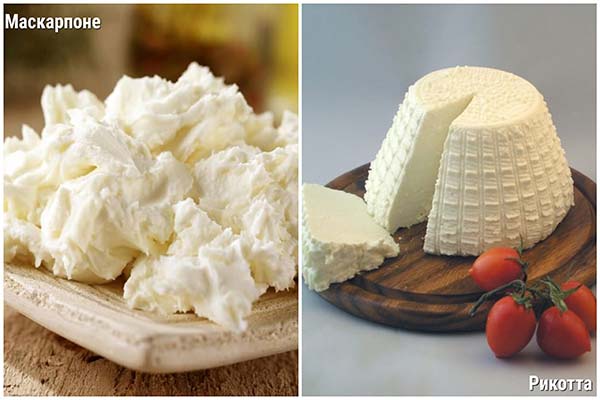
Often mascarpone and ricotta are not distinguished, putting them in the general group of fresh cheeses. This is wrong: although the difference between the two is small, it is there.
Ricotta is a cheese that has a crumbly texture, a bit like cottage cheese. It is used in salads, sometimes in hot dishes and side dishes, less often in desserts.
Mascarpone is made from cream, that's why it has a creamy taste with strongly pronounced sweet notes. Its consistency is similar to a delicate cream. It is used for preparing desserts, for example, for the well-known tiramisu.
Composition and calories
Ricotta most often consists of milk or cream and whey. It also uses citric acid, which acts as an acidity regulator. Ricotta is rich in vitamins A and B as well as calcium and phosphorus, which help strengthen the bones.
The energy value of cheese per 100 grams is as follows:
- Protein: 11 g.
- Carbohydrates: 3 г.
- Fats: 13 gr.
- Calories: 174 calories.
For your information. Ricotta is considered a fairly low-calorie cheese. For example, the caloric value of mascarpone is almost three times higher than the caloric value of ricotta.
What is ricotta cheese good for?
Ricotta contains a lot of vitamins and minerals. Therefore, adding the cheese to everyone's diet will undoubtedly be beneficial.
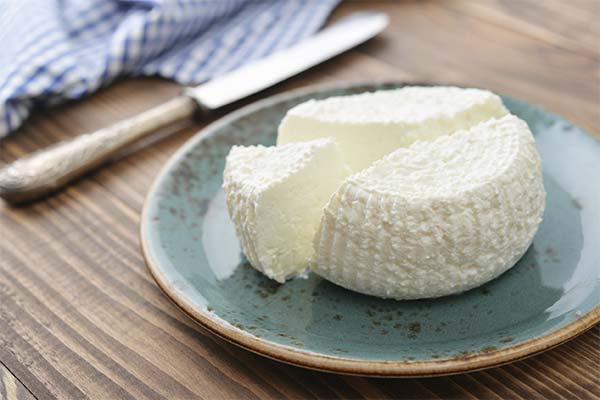
For women
The selenium contained in ricotta can stabilize the hormonal background of women. Eating cheese helps to alleviate PMS, as well as to replenish missing minerals at the onset of menopause.
Include cheese in your diet will be especially useful for expectant mothers. Having vitamins from groups C, D, E and K, as well as manganese, sodium and iron, ricotta is able to influence greatly the weakened body of the future mother, making up for the lack of valuable substances.
For men
The protein contained in the cheese is a valuable substance for the health of men. It can accelerate the development of muscles in the training room.
For your information. It is recommended that professional athletes include ricotta in their diet, the cheese helps them keep muscle mass toned.
For the elderly
For the elderly, boudin cheese is particularly useful for the content of vitamins B and A, as they are necessary to improve vision, which is especially important at an advanced age. Also, the phosphorus and calcium contained in the product slow down the process of joint destruction, and the protein, which is rich in ricotta, supports the condition of muscles that weaken in the process of aging.
For kids
Ricotta is great for baby food. Cheese in most cases does not cause allergies, so you can include it in the child's diet from the first months. It is a product rich in protein and valuable minerals, so it is ideal for the growth and development of the child's body. Cheese is especially useful for the musculoskeletal system of a rapidly growing child.
Is it possible to consume at...
When losing weight
Ricotta is an excellent product for weight loss. It has a low caloric value for cheese and is a light, but quite filling product. Due to this property, eating ricotta will reduce the number of quick snacks during the day, because the cheese will allow for a long time to satisfy hunger and feel satiety. However, it is necessary to consume the product in moderation.
Cheese can serve as a supplement to vegetables (you can make with it salads or side dishes) and to fruits or berries (get a healthy fruit and berry salad). Thus, the product is versatile for creating light and healthy dishes during weight loss.
For gastritis
Cheese is a product that is allowed for gastritis. But you should use it carefully, when the disease is in remission, and the patient does not feel any serious symptoms (heartburn, nausea, stomach pain). Ricotta belongs to the list of low-fat cheeses that are allowed for gastritis, so this product can be safely eaten with this diagnosis.
For diabetes
Ricotta can be eaten with diabetes, but you should introduce it into the diet carefully. Allowed dose - 40 grams twice a week. Eating cheese in a limited amount can benefit the body by providing important vitamins and minerals, and still be full.
Important: The glycemic index of ricotta is 27 units.
Harm and contraindications
It is important to know the contraindications for eating ricotta, so as not to cause serious harm to the body. Do not consume the cheese in the presence of lactose intolerance: there is a high risk of serious gastrointestinal upset. This manifests itself as an allergy to the lactose contained in the cheese.
It is also not recommended to eat ricotta for people with a high risk of blood clots. Cheese increases cholesterol levels in blood vessels because of the saturated fats it contains. As a consequence of the formation of cholesterol plaques, the risk of clogged arteries increases. This means that people with heart and vein diseases should limit their consumption of ricotta, as it can have serious consequences.
How to choose and store
Choosing cheese in the store, you can be guided only by the expiration date, as ricotta is sold in plastic opaque containers. The quality of the cheese is checked at home: the color of the mass should be white, the structure somewhat resembles wet cottage cheese, and on the surface there should not be a dried crust.
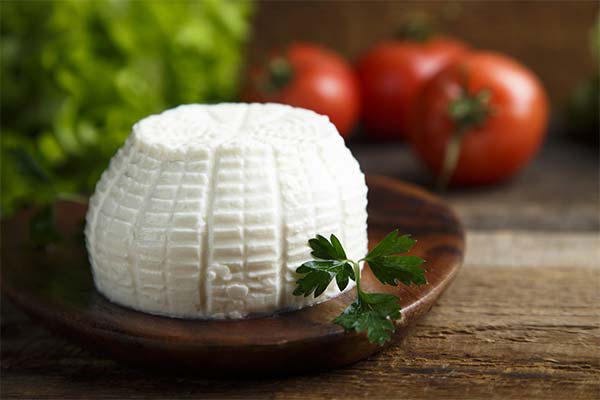
The ricotta, made even at the industrial enterprise from pasteurized milk, is not stored for long - no more than three days. If the shelf life of the cheese is long, it is likely that preservatives were used in its production.
Freezing ricotta will not do any good: the cheese will lose its delicate taste and its creamy structure will be destroyed.
It should be noted that ricotta affumicata (cheese that has been smoked) and ricotta al forno (from the oven) keep longer than the fresh product - about two weeks. And the same variety with added salt (ricotta romana) - about four months.
Where to buy and how much to pay
Ricotta can be ordered on numerous online sites as well as purchased in offline stores, such as Pyatoyochka, Perekryostka, VkusVilla, Lenta, etc. You can also consider specialty stores or farmers markets that provide fresh, natural products to buy cheese.
Ricotta prices vary depending on the brand, so you can find both budget and premium firms making the product at the market. On average, the price of ricotta ranges from 80 to 250 rubles (for 125-250 g).
Cooking Applications
There are many ways to use ricotta in cooking, here are some of them:
- Use the cheese in baking sweets. For example, cheesecakes, casseroles and cheesecakes made with ricotta will have a particularly delicate, unique taste that is sure to please the family.
- Ricotta is spread on bread, after adding spices (Provencal or Italian herbs would be great) and spices.
- The cheese is also served as a dessert. By mixing ricotta with jam, honey, berries and fruit, you can make a simple, and most importantly delicious dessert that is perfect as a breakfast dish.
Can it be baked
Ricotta can be heat-treated. This cheese is used for many dishes that need to be baked or boiled. For example, for lasagna or ravioli.
How and with what you eat ricotta
As mentioned earlier in the article, ricotta can be eaten as a single product. For example, affumicata or forte are used as an appetizer for wine. These types of soft cheeses go well with fruit and bread.
Also ricotta can be added to a dish or even be the base of a dish.
A few tips on how to eat this product:
- The cheese can be used to grease an omelet, making a delicious and simple breakfast dish.
- Whipping ricotta with powdered sugar and adding various additives (chocolate chips, vanilla, berries), you can get a delicious dessert, which is also not difficult to prepare.
- If you add vegetables, croutons, salt and pepper, and dress it all with sunflower or olive oil, you get a delicious and healthy salad.
- You can also prepare a fruit salad. For this you just need to mix ricotta with fruit (for example, watermelon, melon, peach) and decorate the top with seeds.
What kind of wine goes with cheese?
Cheese and wine complement each other perfectly, but to match a certain type of cheese with a type of wine is not easy: you should try to observe the harmony of taste so that one of the products does not overpower the other. What kind of wine goes with ricotta? Before answering this question, let's look at the basic principles of combining cheese and wine:
- The more pronounced the flavor of the cheese, the stronger the wine required.
- Matured cheese should also be served with a more aged drink.
- Cheese pairs best with white wines rather than red wines.
- If you want to find an appetizer for red wine, it is better to choose mild and soft cheeses.
So, ricotta is a fresh cheese, and it is quite difficult to choose a good wine, but nevertheless it is possible. The best with this cheese will be light pink or white wines. Also ricotta will be a harmonious appetizer for young red drinks.
How to make ricotta at home
Ricotta can be made quite easily at home using whey.
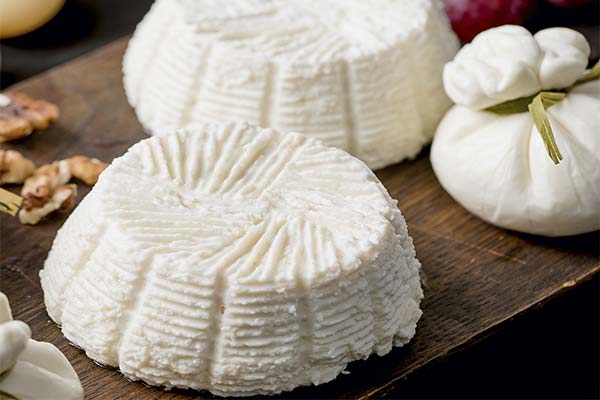
Important: Only cheese whey is suitable for the preparation, curd whey is not used under any circumstances! Also for the preparation we need six percent vinegar (50 grams per 10 liters of whey), lemon juice and a special form for cheese with a fine perforation or drainage lavsan bag.
Stages of cooking ricotta at home:
- First of all, you need to put a container with whey on the stove and heat it to 90-95 degrees. In the process, be sure to stir the mass, as well as to ensure that the temperature does not reach 100 degrees. Otherwise, the structure of the cheese will become more loose and dry.
- The next step after heating the whey is to add lemon juice and vinegar to it.
- Cheese will begin to form on the surface, which will look like flakes. Now you can take it out and put it in a special mold using a slotted spoon. But it is more effective to pour everything from the pan into a lavsan bag. This method is much more effective, because with the bag you can collect all, even the smallest particles of cheese.
- The ricotta is ready after separating it from the whey. Now the cheese can be consumed. But it is worth remembering that the product, prepared at home, has no preservatives in its composition. Consequently, the shelf life is very short - only a couple of days.
Tip! To make the finished cheese more tender, as well as to increase its final quantity, you can add cream to the whey at the very beginning.
What you can make with ricotta cheese
Ricotta is quite versatile, meaning it is used in both hot dishes and desserts.
The cheese can be used in Florentine-style crespelle, in pasculiana pie, and in ravioli or cannelloni ricotta can be the filling. The delicate cheese is also used in more common dishes, such as pizza or lasagna.
Dishes with ricotta don't have to be long and complicated to prepare. The cheese can make a great dressing for a light salad. And if you add a little mildly salty salmon to it, the dish is not only tasty, but also more satisfying.
You can unleash the cheese's full potential by trying to make a dessert out of it. If you whip ricotta and add fresh berries or fruits, honey, jam, chocolate, you get a wonderful cream for all kinds of confectionery. It is suitable both for ordinary sponge cakes and for pies and cheesecakes. You can also add ricotta to casseroles, cheesecakes, a variety of rolls, strudels and even cakes.
As a side note: Ricotta cream goes especially well with carrot biscuits.
What to replace ricotta in recipes
It often happens that when cooking a dish, one of the ingredients is not in the fridge. With the most common products this problem is easy to solve: you can go to the nearest store. But ricotta is much harder to find: most of the time it is not available at small grocery stores. So it's worth finding alternatives to ricotta, so you don't have to run all over the neighborhood looking for this soft cheese.
Cottage cheese
Cottage cheese just like ricotta, has a delicate flavor, so it will be a great substitute for cheese. However, there are some differences between these products: cottage cheese is less fatty than ricotta, so dishes made with it will be even healthier than dishes that use cheese.
Tip: Before adding cottage cheese to a dish, it is recommended to squeeze it a little, this way you can get rid of excess whey.
Sour cream
A great substitute for ricotta sour cream will be in the preparation of sauces. By adding spices, various herbs and garlic to taste, you can make the taste of sour cream not so pronounced. Sour cream is also suitable as a cream for making pastry.
Mascarpone
Mascarpone cheese is quite similar to ricotta, so to use it as a substitute for the second is a good choice. But it is necessary to consider the differences of this variety: it is much more fatty than ricotta, so it is definitely not suitable for the preparation of low-calorie dishes. Also mascarpone is slightly different in taste: this cheese is more intense than ricotta. Because of this property, it is worth combining it with products that have a pronounced smell and taste, so that mascarpone blends into the dish.
Cream cheese
Cream cheese is very similar in texture to ricotta. This feature allows it to easily replace it in different dishes (especially in sauces and desserts).
Important! Still, there is a difference between the cheeses: the percentage of fat content of ricotta is lower than that of cream cheese.
«Important: All information on this site is provided solely for introductory purposes only. Before applying any recommendations, please consult a specialist. specialist before applying any of the recommendations. Neither the editors nor the authors shall be liable for any possible harm caused by materials."

